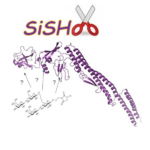@article{molecules26092759,
title = {Lipase-Catalyzed Production of Sorbitol Laurate in a “2-in-1” Deep Eutectic System: Factors Affecting the Synthesis and Scalability},
author = {André Delavault and Oleksandra Opochenska and Laura Laneque and Hannah Soergel and Claudia Muhle-Goll and Katrin Ochsenreither and Christoph Syldatk},
url = {https://www.mdpi.com/1420-3049/26/9/2759},
doi = {10.3390/molecules26092759},
issn = {1420-3049},
year = {2021},
date = {2021-01-01},
urldate = {2021-01-01},
journal = {Molecules},
volume = {26},
number = {9},
abstract = {Surfactants, such as glycolipids, are specialty compounds that can be encountered daily in cleaning agents, pharmaceuticals or even in food. Due to their wide range of applications and, more notably, their presence in hygiene products, the demand is continuously increasing worldwide. The established chemical synthesis of glycolipids presents several disadvantages, such as lack of specificity and selectivity. Moreover, the solubility of polyols, such as sugars or sugar alcohols, in organic solvents is rather low. The enzymatic synthesis of these compounds is, however, possible in nearly water-free media using inexpensive and renewable building blocks. Using lipases, ester formation can be achieved under mild conditions. We propose, herein, a “2-in-1” system that overcomes solubility problems, as a Deep Eutectic System (DES) made of sorbitol and choline chloride replaces either a purely organic or aqueous medium. For the first time, 16 commercially available lipase formulations were compared, and the factors affecting the conversion were investigated to optimize this process, owing to a newly developed High-Performance Liquid Chromatography-Evaporative Light Scattering Detector (HPLC-ELSD) method for quantification. Thus, using 50 g/L of lipase formulation Novozym 435® at 50 °C, the optimized synthesis of sorbitol laurate (SL) allowed to achieve 28% molar conversion of 0.5 M of vinyl laurate to its sugar alcohol monoester when the DES contained 5 wt.% water. After 48h, the de novo synthesized glycolipid was separated from the media by liquid–liquid extraction, purified by flash-chromatography and characterized thoroughly by one- and two-dimensional Nuclear Magnetic Resonance (NMR) experiments combined to Mass Spectrometry (MS). In completion, we provide initial proof of scalability for this process. Using a 2.5 L stirred tank reactor (STR) allowed a batch production reaching 25 g/L in a highly viscous two-phase system.},
keywords = {},
pubstate = {published},
tppubtype = {article}
}
